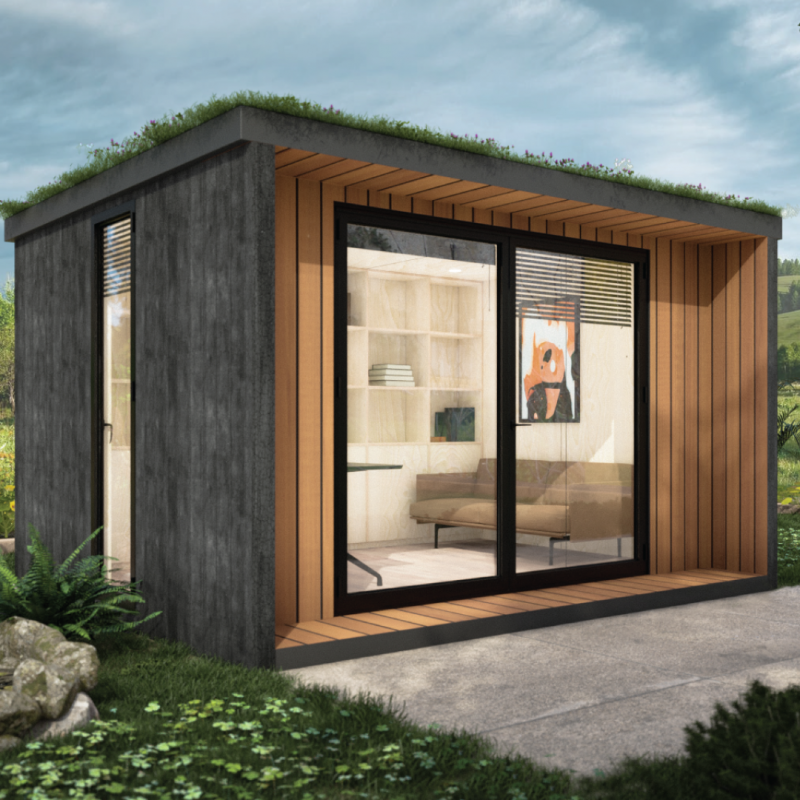In the realm of architectural innovation, the concept of modular buildings has surged in popularity, offering a fresh approach to design and construction. No longer confined to the realm of temporary structures, modular buildings have evolved to embody a sustainable, flexible, and high-quality alternative to traditional construction methods. This is a revolution that architects and construction firms cannot afford to overlook.
The idea of modularity in construction is not new. In fact, it can be traced back to pre-fabricated housing in the early 20th century.
These prefabricated homes, often dismissed as cheap and of inferior quality, tarnished the reputation of modular construction for many years. However, with advancements in technology, materials science, and manufacturing, the modular approach has transformed into a hallmark of efficiency and precision.
With sustainability at the forefront of the industry, the modular concept represents a reduction in environmental impact. The controlled manufacturing environments ensure minimal waste, efficient use of energy, and a thoughtful consideration of life cycle analysis.
By allowing for greater standardization and repetition of building components, modularity also opens the door to more consistent and higher-quality construction practices.
One of the most alluring aspects of modular buildings is the flexibility they offer in design. Architects are no longer constrained to the limitations of on-site construction. Instead, they can now leverage the freedom to reimagine interior and exterior spaces, creating structures that are not only visually stunning but also entirely bespoke to their intended use.
Modular design is a collaborative dialogue between architects and manufacturers. By integrating Building Information Modeling (BIM) with manufacturing processes, the barriers between design and construction are broken down, streamlining the entire process. This alignment enables rapid iteration, cost-effective design changes, and a high degree of customization that is simply unattainable with traditional techniques.
The heart of modular construction lies in its manufacturing. Off-site production is the anchor of this methodology, and the capabilities of modern manufacturing facilities are nothing short of miraculous. High-tech factories now produce modules with the precision of a Swiss watch.
The manufacturing process harnesses a variety of materials – ranging from traditional steel and concrete to novel carbon-fibre composites, each selected for their specific application. Automation, robotics, and machine learning are leveraged to ensure that every module meets exacting standards. These facilities are not only efficient but also provide a safe, controlled environment that promotes worker well-being and peak productivity.
For all its promise, modular construction does present challenges—notably in the transportation and on-site assembly of modules. Coordinating logistics, including the delivery of oversized components through often congested urban areas, poses a significant hurdle. Once on site, the intricate dance of modules to their final locations requires careful orchestration.
To address these complexities, an integrated approach is essential. Collaboration between architects, manufacturers, and construction crews must be seamless. Building with modularity requires a different mindset, one that appreciates the intricacies of the entire value stream. When executed correctly, the results are breathtaking in their efficiency and satisfying in their contribution to a smoother project delivery.
Regulation is another hurdle to mainstream adoption of modular construction. Local building codes around the world are often written with stick-built construction in mind, and adapting these to modular practices requires patience and persistence. Furthermore, winning public acceptance is an ongoing battle, as modular buildings still carry the stigma of their less-refined predecessors.
Yet the tide is turning. Codes are being updated to accommodate the nuances of modular construction, and public opinion is shifting as more high-profile projects showcase the potential of this method. With clear communication, transparent processes, and a commitment to meeting and exceeding standards, the modular industry is charting a course towards greater acceptance.
The future of modular construction is a tantalizing horizon of possibilities. With the continued integration of digital technology, off-site production will become even more precise and efficient. 3D printing could fundamentally alter the concept of modular elements, pushing the boundaries of design and reducing production time even further.
The green building movement will drive more sustainable practices and materials, further enhancing the eco-friendly image of modular construction. Integration with smart technologies will also play a significant role, setting the stage for intelligent, adaptable buildings that respond to their environments and the needs of their occupants.

The evolution of modular buildings represents a significant leap forward in the construction industry. It is a method that not only addresses the current challenges of the sector but also aligns with the values and demands of modern society. From the drawing board to manufacturing floors to the cities and landscapes they will inhabit, modular buildings are redefining our approach to architectural and construction excellence. To be part of this narrative is to be at the forefront of a new era in building.
Unit C2 Copley Hill Trading Estate, Whitehall Road, Leeds, LS12 1HE | sales@turoffen.com | 0113 848 0710